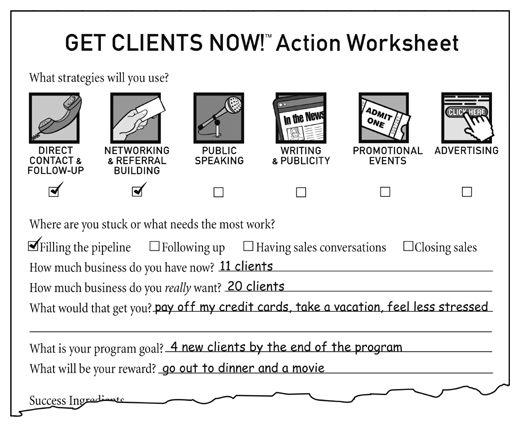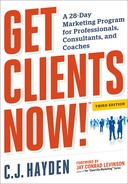WHAT IS A GOAL, ANYWAY?
When you are planning to cook a meal, it’s necessary to know if your intended dish is soup or pasta before you begin. To choose the right Success Ingredients in Chapter 4 and make the best selections from the Action Plan Menu in Chapter 5, you must first determine what sort of feast you wish to create. That’s where a goal comes in.
A goal is your statement of intention. It is your own personal declaration of what you want, what you plan to focus on, and what you intend to accomplish. Having a sales and marketing goal gives you a destination for your business-building journey. Only when you know where you are going can you choose the right path to get you there. And you have to be clear about your destination to know when you have arrived.
Many years ago, some unsung champion of goal-setting came up with the acronym SMART to describe the five important characteristics of a meaningful goal:
Specific. Your goal precisely spells out your desired result.
Measurable. The goal states your target in measurable terms so you will know when you have arrived, as well as where you are at any specific moment.
Achievable. A goal is physically possible to accomplish within any defined limitations.
Realistic. Your goal can be accomplished within the specified time and with available resources.
Time-based. There is a calendar date by which you plan to achieve your goal.
Here are some examples of SMART goals you might set for the twenty-eight days of the Get Clients Now! program:
Two new clients with signed agreements by the end of the program
Fifteen paying appointments scheduled weekly beginning in Week 3
Twenty-two billable hours worked per week for the full month
Six thousand dollars in business booked for the following month by Week 4
Eight new qualified prospects by the end of the program
Your program goal will help you get into action. If you have a specific target that must be accomplished by a particular date, you will perform tasks that would otherwise languish on a to-do list. It will also help you measure your effectiveness. If you are moving toward your goal, your actions are effective; if you are not moving toward it, they are ineffective, or not effective enough.
Now you’re ready to set a goal. As you answer the questions in the next section, write your responses on your Action Worksheet. See the sample worksheet in Figure 3-1 for an example.
Figure 3-1: Beginning to Fill Out the Action Worksheet

